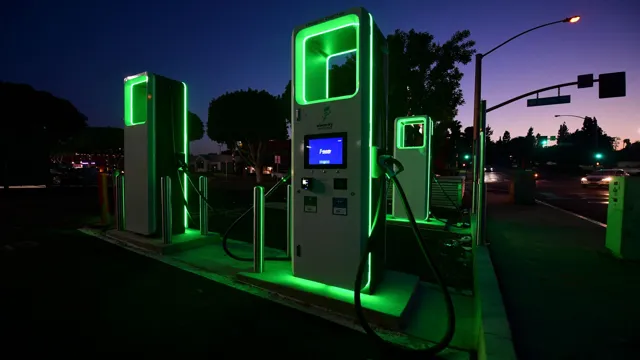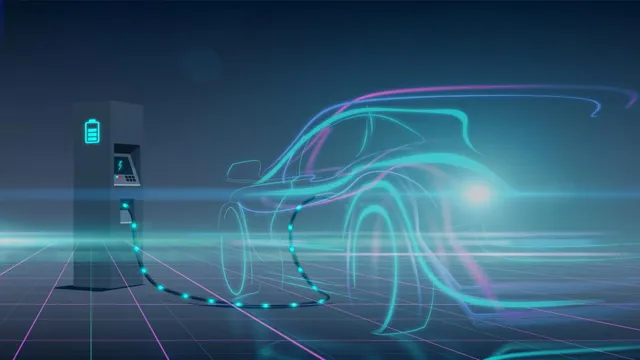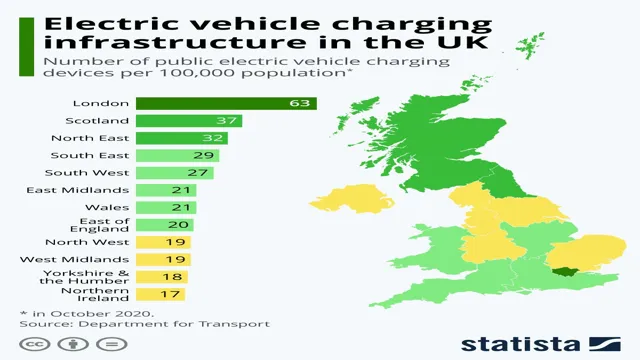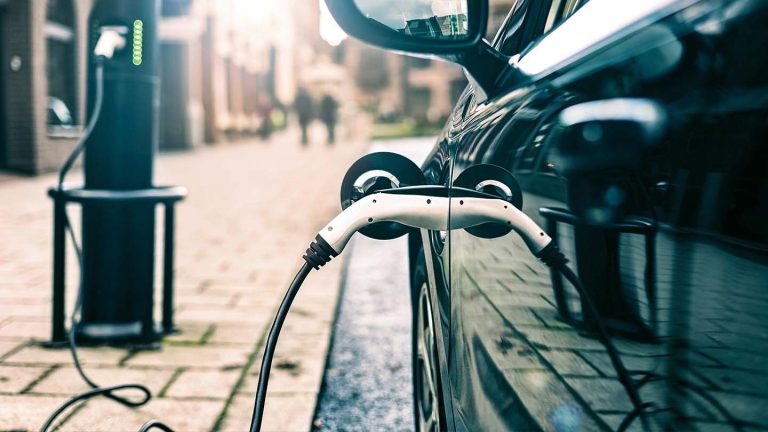Juicing up for the Future: The Growth of Electric Car Charging Station Infrastructure
Electric cars are becoming increasingly popular, and for good reason. They are an environmentally friendly mode of transportation, producing less carbon emissions and promoting sustainability. However, as electric cars become more mainstream, the need for electric car charging stations is becoming more pressing.
Without these stations, electric cars are virtually useless as they rely on being charged at specific locations. In this blog post, we will explore the importance of electric car charging stations, discussing how they enable electric cars to be a viable option for drivers, their economic benefits, and the role they play in promoting sustainability. So, buckle up, charge your car, and let’s dive into the world of electric car charging stations.
Current Infrastructure
The electric car charging station infrastructure has been evolving at a remarkable pace to cater to the growing number of electric vehicles on the roads. In recent years, the installation of charging stations has increased drastically in an effort to provide EV drivers with more convenience. The infrastructure currently in place is still relatively new, which means it’s still experiencing growing pains in terms of consistency regarding charging protocols, station locations, and payment options.
While some cities have embraced electric vehicle technology and built networks of charging stations, others are still lagging behind due to a lack of funding or political will. Nevertheless, electric car charging station infrastructure is adapting day-by-day, and with advancements in battery technology, it is expected to grow faster in the years to come, making EV motoring more accessible for all.
Number of Charging Stations Available Worldwide
The availability of charging stations for electric vehicles (EVs) is a crucial factor in the adoption and success of this eco-friendly mode of transportation. As of March 2021, there were around 4 million charging stations worldwide, with the majority of them located in China and Europe.
However, the United States is also rapidly increasing its charging infrastructure, with almost 100,000 charging ports available nationwide. The demand for charging stations is expected to surge as more and more people switch to electric vehicles in the coming years. Therefore, the expansion of charging infrastructure is crucial to ensure the convenience and accessibility of charging for all EV drivers.
With this in mind, governments and private businesses alike are investing in the installation of more charging stations at public places such as malls, airports, and highways to meet this growing demand. Thus, the proliferation of charging stations will be key to the success of electric vehicles, paving the way to a greener and more sustainable future for us all.

Popular Countries for EV Infrastructure
When it comes to electric vehicle (EV) infrastructure, there are some countries leading the charge. Norway is perhaps the most well-known example, with a comprehensive network of charging stations and incentives for EV drivers. In fact, EVs make up an impressive 54% of new car sales in Norway.
Other European countries are also investing in infrastructure, such as the UK and Germany. Meanwhile, in China, the government is pushing hard for EV adoption and has plans to have 30% of new cars be electric by 2030. In the United States, California is the clear leader in terms of EV infrastructure, with over 15,000 public charging stations available.
However, it’s important to note that EV infrastructure is still a relatively new industry and there is much work to be done in many parts of the world. But with growing interest in EVs and the need to reduce carbon emissions, we can expect to see more investment in infrastructure from governments, businesses, and individuals alike.
Benefits of Investing in Electric Car Charging Stations
Investing in electric car charging station infrastructure can provide numerous benefits. For one, it attracts a new customer base of electric vehicle (EV) owners who need to recharge their cars. This can lead to increased foot traffic and sales for businesses that have charging stations installed, particularly in tourist areas or busy shopping districts.
Additionally, having a charging station can enhance a company’s image as environmentally conscious and progressive. From a broader perspective, investing in EV infrastructure can play a role in reducing carbon emissions and improving air quality. As more people switch to EVs, the demand for charging stations will only increase.
By investing in the infrastructure now, cities and businesses can stay ahead of the curve and help encourage more widespread EV adoption. Furthermore, incorporating charging stations into buildings or parking lots can be seen as a form of future-proofing. As regulations and laws on emissions and sustainability become more stringent, having electric charging infrastructure in place will ensure that facilities stay compliant and operational.
Overall, investing in electric car charging station infrastructure is a smart move for businesses and cities looking to attract and accommodate the growing number of EV drivers. It provides a variety of benefits, from increased foot traffic and sales to environmental sustainability and future-proofing.
Attracting Electric Vehicle Owners to Businesses
Investing in electric car charging stations can be a major advantage for businesses looking to capture new customers and enhance their green credentials. With the rise in popularity of electric vehicles, having charging stations readily available for customers can be a smart move. Imagine attracting electric car owners to your business who, while their car is charging, can browse products and services, or grab a coffee or a bite to eat.
It not only enhances your business’s customer base but also demonstrates a commitment to environmental sustainability, catching the attention of eco-conscious consumers. Offering charging stations can also set your business apart from competition and leave a good impression on those who prioritize sustainability. By making a small upfront investment, your business can reap long-term benefits in attracting new customers and enhancing your brand’s reputation.
Reducing Carbon Footprints and Boosting Sustainability
Investing in electric car charging stations is an excellent way to reduce carbon footprints while boosting sustainability. By providing convenient charging options, EV owners are more likely to choose sustainable transportation options, leading to a reduction in greenhouse gas emissions. Additionally, having charging stations available in public locations can help to increase the adoption of electric vehicles by reducing range anxiety.
This, in turn, helps to increase demand for EVs, leading to more mass production and more affordable prices. By investing in electric car infrastructure, businesses can demonstrate their commitment to sustainability, attract a wider customer base, and reduce their own carbon footprint. So, If you are a business owner or property manager, now is the perfect time to consider investing in this technology to make a positive impact on the environment and the future of transportation.
Financial Incentives for Businesses and Governments
Investing in electric car charging stations can bring various benefits for businesses and governments, including financial incentives. Considering that electric vehicles continue to gain popularity, investing in charging stations can attract customers or visitors who drive EVs, ultimately helping local businesses or destinations increase traffic and revenue. Moreover, governments can offer grants or rebates to businesses or property owners who install charging stations, which can potentially offset the installation costs.
Although it may require an initial investment, opting for EV charging stations can also promote environmental sustainability and energy efficiency, which can help demonstrate a business or government’s commitment to reducing carbon emissions and promoting a cleaner future. Overall, investing in electric car charging stations can lead to long-term advantages and may even provide a competitive edge over other businesses or destinations.
Types of Charging Stations
When it comes to electric car charging station infrastructure, there are various types of charging stations available for EV owners to use. The level 1 charging station is the most basic and typically comes with the purchase of an electric car. These chargers can be plugged into a standard 120-volt outlet, but they require a longer charging time compared to other types of stations.
The level 2 charging station, on the other hand, uses a 240-volt outlet and can charge an electric vehicle at a much faster rate. These types of stations are commonly found in homes, workplaces, and public parking areas. Finally, there are DC Fast Chargers, which are ideal for long-distance travel since they can charge up to 80% of an EV’s battery in as little as 30 minutes.
DC Fast Chargers are found along major highways and public charging stations. As electric cars become more popular, it’s important for cities and businesses to invest in the infrastructure necessary to support EV drivers, including a variety of charging station types to meet their needs.
Level 1 Charging
Level 1 charging is the most basic and common type of charging for electric vehicles (EVs). It involves using a standard 120-volt electrical outlet, which is also known as a Level 1 charging station. However, this type of charging is the slowest option available, offering only about 4 miles of range per hour of charging.
This means that it can take anywhere from 8 to 20 hours to fully charge an EV with Level 1 charging, depending on the battery size. Level 1 charging stations are usually found at home or in public areas, such as parking garages or shopping centers, and are ideal for those who have access to them throughout the day or need only to charge their vehicle for short distances. However, when it comes to longer distances, Level 1 charging is not the most practical option, and it may be necessary to consider a Level 2 or DC Fast Charging station for a faster and more efficient charge.
Level 2 Charging
Level 2 charging is a type of electric vehicle charging that can provide faster charging than Level It operates at 240 volts and can charge an EV up to three times faster, making it a convenient option for those who need a quick top-up on the go, such as at offices, restaurants, or shopping centers. Level 2 charging stations are available in both public and private locations and can be wall-mounted or stand-alone units.
The process of using a Level 2 charger is simple and straightforward, and adapters are available for most EV models. As the popularity of electric vehicles continues to grow, Level 2 charging stations are becoming more common, making it easier for EV owners to travel longer distances without worrying about running out of power.
Future of Electric Car Charging Station Infrastructure
The future of electric car charging station infrastructure looks bright. With more and more people switching to electric vehicles, the demand for charging stations is increasing rapidly. As a result, governments and private companies are investing in the installation of charging stations at strategic locations such as major highways, parking lots, and residential areas.
The goal is to make charging as convenient and accessible as filling up at a gas station. However, there are some challenges to overcome, such as the limited range of electric vehicles and the high cost of installing and maintaining charging stations. Nonetheless, advancements in technology and the increasing availability of renewable energy sources are providing solutions to these challenges.
In the end, it’s clear that the electric car charging station infrastructure will play a crucial role in the widespread adoption of electric vehicles, and we can expect to see significant growth and innovation in this sector in the coming years.
Conclusion
In conclusion, the electric car charging station infrastructure is the key to unlocking a carbon-free transportation future. Just as roads and highways were built to accommodate the proliferation of automobiles, so must we build a network of charging stations for electric vehicles. This infrastructure will not only allow for easier and more convenient charging, but also encourage more individuals to make the switch to electric cars.
With the right investment and planning, electric car charging stations will become as ubiquitous as gas stations, and we will usher in a new era of clean, sustainable transportation. So let’s charge ahead and build the infrastructure needed to power our future!”
FAQs
What is an electric car charging station infrastructure?
An electric car charging station infrastructure refers to the network of charging stations for electric vehicles that are installed in a specific area or region.
Do electric car charging station infrastructures offer fast charging options?
Yes, some electric car charging station infrastructures do offer fast-charging options, which can provide up to 80% charge in less than 30 minutes.
Are electric car charging station infrastructures expensive to install?
The cost of installing an electric car charging station infrastructure varies depending on various factors such as the number of charging stations required, the type of charging equipment used, and the complexity of the installation. However, the cost is usually high compared to installing traditional fueling stations.
How is the electric car charging station infrastructure maintained?
The maintenance of an electric car charging station infrastructure is typically handled by the owners or operators of the charging stations. The maintenance activities may include regular cleaning, software upgrades, hardware repairs or replacements, and monitoring of usage statistics.






